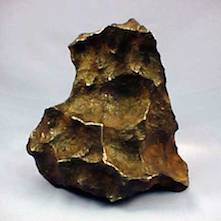Welcome to
On Feet Nation
Members
-
farhan Online
-
-
Blog Posts
The Ultimate Guide to Professional Pool Cleaning in Delray Beach
Posted by jack on February 20, 2025 at 2:06pm 0 Comments 0 Likes
Owning a swimming in Delray Beach is just a luxury that comes with the responsibility of regular maintenance. While some homeowners may attempt to clean their pools themselves, professional pool cleaning Affordable pool cleaning services in Delray Beach offers an amount of expertise and thoroughness that ensures the pool remains in optimal condition. Professional cleaners have specialized… Continue
Top Content
Carbon dating definition history
What does carbon dating mean? definition, meaning and pronunciation (Free English Language Dictionary)

❤ : Carbon dating definition history
Potassium or uranium isotopes which have much longer half-lives, are used to date very ancient geological events that have to be measured in millions or billions of years. By dating man-made artifacts from Europe, the Americas, Asia, Africa and Oceania, archaeologists established that civilizations developed in many independent sites across the world. The pathway from the plant to the molecule may have been indirect or lengthy, involving multiple physical, chemical, and biological processes.

Many labs now use an AMS , a machine that can detect and measure the presence of different isotopes, to count the individual 14C atoms in a sample. For example, all carbon atoms have 6 protons, all atoms of nitrogen have 7 protons, and all oxygen atoms have 8 protons.

Ninety-nine percent of these also contain six neutrons. Huth 25 November 1994. They are carbon-12, carbon-13 and carbon-14. The application of radiocarbon dating to groundwater analysis can offer a technique to predict the over-pumping of the aquifer before it becomes contaminated or overexploited. The second difficulty arises from the extremely low abundance of 14C. Potassium or uranium isotopes which have much longer half-lives, are used to date very ancient geological events that have to be measured in millions or billions of years.
What is Carbon Dating? : NOSAMS - For the airport with the IATA code YBP, see. The carbon in its body will remain until it decomposes or fossilizes.

This isotope lets scientists learn the ages of once-living things. Radiocarbon dating is a technique used by scientists to learn the ages of biological specimens — for example, wooden archaeological artifacts or ancient human remains — from the distant past. It can be used on objects as old as about 62,000 years. What is an isotope? To understand radiocarbon dating, you first have to understand the word isotope. An isotope is what scientists call two or more forms of the same element. But they still have the same chemical properties. Atoms of the same element that have different numbers of neutrons are called isotopes. Radiocarbon dating uses isotopes of the element carbon. Image via Radiocarbon dating uses carbon isotopes. Radiocarbon dating relies on the carbon isotopes carbon-14 and carbon-12. Scientists are looking for the ratio of those two isotopes in a sample. Most carbon on Earth exists as the very stable isotope carbon-12, with a very small amount as carbon-13. Carbon-14 is an unstable isotope of carbon that will eventually decay at a known rate to become carbon-12. Carbon-14 is considered a radioactive isotope of carbon. They have the same ratio of carbon-14 to carbon-12 as the atmosphere, and this same ratio is then carried up the food chain all the way to apex predators, like sharks. But when gas exchange is stopped, be it in a particular part of the body like in deposits in bones and teeth, or when the entire organism dies, the ratio of carbon-14 to carbon-12 begins to decrease. The unstable carbon-14 gradually decays to carbon-12 at a steady rate. Scientists measure the ratio of carbon isotopes to be able to estimate how far back in time a biological sample was active or alive. This plot shows the level of carbon-14 in the atmosphere as measured in New Zealand red and Austria green , representing the Southern and Northern Hemispheres, respectively. Aboveground nuclear testing almost doubled the amount of carbon-14 in the atmosphere. The black arrow shows when the Partial Test Ban Treaty was enacted that banned aboveground nuclear tests. Image via Hokanomono via Wikimedia Commons. A special kind of radiocarbon dating: Bomb radiocarbon dating. As we mentioned above, the carbon-14 to carbon-12 ratio in the atmosphere remains nearly constant. Among the significant events that caused a temporary but significant spike in the atmospheric carbon-14 to carbon-12 ratio were above-ground nuclear test detonations in the two decades following World War II. Bomb radiocarbon dating is a term for radiocarbon dating based on timestamps left by above-ground nuclear explosions, and it is especially useful for putting an absolute age on organisms that lived through those events. If you ever wondered why nuclear tests are now performed underground, this is why. Most radiocarbon dating today is done using an , an instrument that directly counts the numbers of carbon-14 and carbon-12 in a sample. A detailed description of radiocarbon dating is available at the. Bottom line: Radiocarbon dating is a technique used by scientists to learn the ages of biological specimens from the distant past.
Creation v. Evolution: How Carbon Dating Works
Ninety-nine percent of these also contain six neutrons. Huth 25 November 1994. They are carbon-12, carbon-13 and carbon-14. The application of radiocarbon dating to groundwater analysis can offer a technique to predict the over-pumping of the aquifer before it becomes contaminated or overexploited. The second difficulty arises from the extremely low abundance of 14C. Potassium or uranium isotopes which have much longer half-lives, are used to date very ancient geological events that have to be measured in millions or billions of years. Ashton kutcher cameron diaz dating Wordpress dating plugin review
The weeknd dating list
© 2025 Created by PH the vintage.
Powered by
![]()
You need to be a member of On Feet Nation to add comments!
Join On Feet Nation